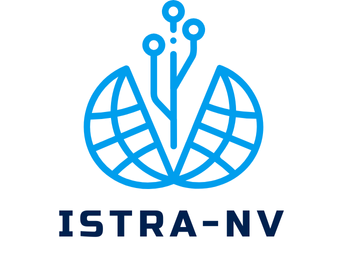Smart lighting transforms any home, enhancing convenience, energy efficiency, and ambiance. Choosing the right solutions requires understanding your specific needs and system compatibility. From smart bulbs to integrated systems, today's options offer diverse features. With innovative technology at your fingertips, discover how these lighting solutions can elevate your home automation experience, create the perfect atmosphere, and improve your daily life. Explore the possibilities that await your living spaces.
Overview of Smart Lighting Solutions
Exploring the world of smart lighting can illuminate the path to a more efficient and convenient home automation experience. Smart lighting refers to advanced lighting systems that can be controlled remotely, often through a smartphone app or voice command. These systems are integral to the broader home automation landscape, offering users the ability to customize their lighting environments to suit their preferences and schedules.
In parallel : Creating the Perfect Harmony: Optimal Layout Ideas for a Dual-Function Guest Room and Home Office
Key benefits of integrating smart lighting solutions include energy efficiency, enhanced security, and improved ambiance. By allowing precise control over lighting levels and schedules, these systems can significantly reduce energy consumption. Additionally, smart lighting can simulate occupancy when you're away, deterring potential intruders. The ability to adjust lighting color and intensity also enhances the aesthetic appeal of living spaces.
Market trends indicate a growing adoption of smart lighting technology. Consumers are increasingly drawn to its convenience and the potential for long-term cost savings. As technology advances, smart lighting systems are becoming more accessible and user-friendly, encouraging more homeowners to embrace this innovative solution.
Have you seen this : Creating the Perfect Family Fireplace Nook: Your Guide to Safety and Cozy Design
- Benefits of Smart Lighting:
- Energy savings
- Enhanced security
- Customizable ambiance
Smart lighting is not just a trend but a transformative element in modern home automation.
Top Smart Lighting Products
Exploring the best smart lights involves understanding the range of products available from top brands. These leading brands offer a variety of options, each suited to different needs and preferences.
Comparison of Leading Smart Lighting Brands
When considering top brands, Philips Hue, LIFX, and Wyze stand out for their innovative features and user-friendly designs. Philips Hue is renowned for its extensive ecosystem and compatibility with various smart home platforms. LIFX offers smart lighting solutions with vibrant colors and high brightness, often without the need for a hub. Wyze provides affordable options with reliable performance, making it a popular choice for budget-conscious consumers.
Highlighting Standout Products
In the bulbs category, the Philips Hue White and Color Ambiance bulbs are highly rated for their versatility. For light strips, the LIFX Z LED Strip delivers exceptional color accuracy and flexibility. Wyze Bulb Color is a standout in terms of affordability and ease of use.
User Ratings and Feedback
- Philips Hue: Users praise its seamless integration and expansive features.
- LIFX: Appreciated for its vibrant colors and Wi-Fi connectivity.
- Wyze: Noted for its cost-effectiveness and straightforward setup.
These smart lighting products enhance home automation by offering customizable and energy-efficient solutions tailored to user preferences.
Compatibility with Home Automation Systems
Exploring seamless integration options for smart lighting solutions.
Examining Popular Home Automation Platforms
Compatibility with home automation systems is crucial when integrating smart lighting solutions. Popular platforms like Alexa, Google Home, and Apple HomeKit offer robust ecosystems that enhance the functionality of smart lighting. Ensuring your chosen lighting products work with these systems can streamline control and maximize convenience.
How to Check Compatibility
To verify compatibility, examine the product specifications or packaging for logos of your home automation platform. Manufacturers often highlight supported systems. Additionally, consult the manufacturer's website for detailed integration guides.
- Alexa: Offers voice control and routines for smart lighting.
- Google Home: Provides seamless control through Google Assistant.
- Apple HomeKit: Ensures secure and private automation.
Case Studies of Successful Integrations
Consider a scenario where a homeowner successfully integrates Philips Hue with Google Home. By linking the two, they achieve effortless voice control and scheduling, enhancing the home's ambiance and energy efficiency. Another example involves Apple HomeKit, known for its secure connections, offering a seamless experience with LIFX bulbs.
Understanding these compatibility aspects ensures a smooth transition to a smart home environment, allowing users to enjoy the full benefits of integrated smart lighting solutions.
Features to Look for in Smart Lighting
Understanding the essential features of smart lighting can enhance your home experience.
Essential Features
When selecting smart lighting, consider dimming, color changing, and scheduling capabilities. Dimming allows you to adjust light intensity, creating the perfect ambiance for any occasion. Color-changing features offer versatility, enabling you to switch between warm and cool tones. Scheduling is crucial for automating your lighting, ensuring lights turn on and off according to your daily routine.
Advanced Functionalities
Advanced smart lighting features include motion sensors, remote access, and voice control. Motion sensors enhance security and energy efficiency by activating lights only when movement is detected. Remote access allows you to control your lighting from anywhere using a smartphone app. Voice control, compatible with platforms like Alexa and Google Assistant, offers hands-free convenience.
Importance of Energy Efficiency
Energy efficiency is a vital consideration for sustainability. Smart lighting solutions often use LED technology, which consumes less energy than traditional bulbs. This not only reduces your carbon footprint but also lowers electricity bills.
- Dimming: Adjusts light intensity
- Color Changing: Switches between tones
- Scheduling: Automates lighting routines
By focusing on these smart lighting features, you can create a more efficient, customizable, and environmentally friendly home.
Installation and Setup Guide
Simplifying the process of smart lighting installation and setup.
Step-by-Step Installation
Installing smart lighting products can be straightforward with the right guidance. Begin by ensuring your lights are compatible with your existing home automation system. Replace your current bulbs with smart bulbs and download the corresponding app. Follow the app's prompts to connect the bulbs to your Wi-Fi network. For light strips, attach them to clean surfaces and connect to a power source before syncing with the app.
Overcoming Common Challenges
Common challenges in smart lighting installation include connectivity issues and app malfunctions. Ensure your Wi-Fi signal is strong where the lights are installed. If connection problems persist, try restarting your router or resetting the bulbs. Check for app updates to resolve glitches.
Tips for Optimizing Setup
-
Positioning: Place lights strategically to maximize coverage.
-
Network: Use a stable Wi-Fi connection for consistent performance.
-
Integration: Sync with your home automation system for seamless control.
Optimizing your smart lighting setup enhances both performance and user experience. By following these steps and tips, you can enjoy the full benefits of a well-integrated smart lighting system, transforming your home into a more efficient and convenient space.
Price Ranges and Budgeting
Exploring cost-effective smart lighting solutions.
Overview of Price Ranges
Smart lighting prices can vary significantly, influenced by brand, features, and compatibility. Basic smart bulbs start around $10-$20, while advanced options with color-changing and dimming capabilities can reach $50 or more. Light strips and specialty lights often range from $30 to $100, depending on length and features.
Budgeting for a Smart Lighting System
When planning your budget, consider the size of your space and the number of smart lighting products needed. Prioritize features based on your needs—whether it's energy efficiency, color versatility, or integration with existing systems. A well-thought-out budget ensures you get the best value without overspending.
Cost-Benefit Analysis
Investing in smart lighting can offer long-term savings. Although initial smart lighting prices may seem high, the energy efficiency and lifespan of LED technology reduce costs over time. Enhanced security and ambiance also add value to your home.
- Basic Bulbs: $10-$20
- Advanced Bulbs: Up to $50
- Light Strips: $30-$100
By understanding these smart lighting prices, you can make informed decisions that align with your financial goals and home automation needs.
User Reviews and Experiences
Exploring customer insights into smart lighting products.
Summary of User Experiences
User reviews of smart lighting products offer valuable insights into customer experiences. Many users appreciate the energy efficiency and convenience of these systems. However, some mention occasional connectivity issues. Overall, smart lighting receives high praise for enhancing home ambiance and security.
Common Praises and Complaints
Feedback from customers highlights several common themes:
-
Praises:
-
Easy integration with home automation systems.
-
Versatile color changing and dimming features.
-
Significant reduction in energy bills.
-
Complaints:
-
Occasional app malfunctions.
-
Initial setup can be challenging for some.
-
Compatibility issues with older devices.
Recommendations Based on User Reviews
Based on user experiences, we recommend considering the following when purchasing smart lighting:
- Research: Ensure compatibility with your existing home automation systems.
- Ease of Use: Look for products with user-friendly apps and clear setup instructions.
- Features: Prioritize essential features like dimming and scheduling.
User reviews and feedback are crucial for making informed decisions. By understanding common praises and complaints, you can select smart lighting solutions that best meet your needs and preferences.
Frequently Asked Questions
Exploring smart lighting FAQs and common concerns.
Addressing Common Concerns
Smart lighting integration often raises questions about compatibility and ease of use. Many users wonder if their existing home automation systems can support these advanced lighting solutions. To address these concerns, ensure your smart lighting products are compatible with popular platforms like Alexa, Google Home, or Apple HomeKit. Additionally, users frequently ask about the security of smart lighting systems. Rest assured, most reputable brands offer encrypted connections to protect your data.
Troubleshooting Common Issues
Users occasionally face connectivity issues with their smart lighting systems. If you're experiencing problems, try the following troubleshooting tips:
- Restart your router and smart lighting devices.
- Check for firmware updates in the app.
- Ensure a strong Wi-Fi signal where the lights are installed.
Tips for Maximizing Benefits
To fully enjoy the benefits of smart lighting, consider these tips:
- Customize your lighting schedules for energy efficiency.
- Experiment with color settings to enhance ambiance.
- Integrate with other smart home devices for seamless automation.
By addressing these smart lighting FAQs and common concerns, you can overcome potential challenges and optimize your home automation experience.











